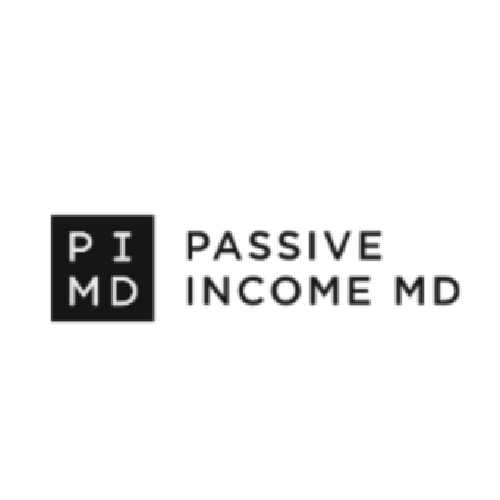Location is the cornerstone of success in multifamily investing, influencing everything from tenant demand to property appreciation. A well-chosen location can mean the difference between consistent cash flow and prolonged vacancies. Factors such as job growth, population trends, access to amenities, and local economic stability all play a critical role in determining a property’s long-term potential. At Viking Capital, we recognize the power of location in driving investment success. Each year, we evaluate thousands of deals, applying rigorous market analysis and countless hours of due diligence only to select the best opportunities. By identifying high-growth areas with strong demand and economic resilience, we position our investors to achieve higher returns, lower risk, and lasting success. In this blog, we’ll share proven strategies for spotting emerging growth markets, equipping you with the insights needed to build a thriving multifamily portfolio.
What Defines a Growth Area
A growth area is defined by a combination of strong economic indicators, population expansion, and robust infrastructure development. Job growth and rising median income levels point to a thriving economy, while economic diversity ensures resilience against market fluctuations. Areas with increasing population growth show clear demand for multifamily housing, as more residents seek quality rental options. New infrastructure, such as public transportation and community amenities, signals future development and enhances the appeal of these locations., A recent study by Moody Analytics highlights how labor market conditions, socio-economic benefits, environmental concerns, and ongoing work-from-home policies shape migration patterns, directly influencing housing demand. Markets, where rental demand outpaces homeownership, reflect shifting preferences, making these high-growth areas prime opportunities for multifamily investment.
Analyzing Market Data and Trends
Successful multifamily investing requires actively analyzing market data and trends to identify promising opportunities. Investors can leverage reliable real estate market reports to track key metrics like rental growth, vacancy rates, and cap rates, offering a clear picture of market performance. Evaluating historical property appreciation helps predict future growth potential, guiding strategic decisions. Additionally, spotting transitioning neighborhoods with signs of gentrification or revitalization projects provides early entry into markets poised for long-term appreciation. This is one of Viking’s key strategies used on all future deals and potential locations. Staying informed through data and observing neighborhood dynamics ensures investors position themselves in markets with strong growth trajectories.
Local Economic Drivers and Job Creation
Local economic drivers and job creation play a pivotal role in shaping the success of multifamily investments. Major employers moving into or expanding in a city significantly boost housing demand, as seen in Austin’s rise as the tech hub of the South. Growing industries like tech, healthcare, and education provide long-term stability by attracting skilled professionals and fostering economic growth. Government initiatives, such as tax breaks and development plans, further enhance regional appeal, creating fertile ground for multifamily investments. For example, Fortune 500 companies relocating to the Dallas area are driving a surge in multifamily demand, making it a hotbed for investment opportunities. Identifying these drivers allows investors to tap into thriving markets with strong economic fundamentals.
Evaluating Infrastructure and Community Development
Evaluating infrastructure and community development reveals critical insights into multifamily investment opportunities. Expanding transportation networks, such as new public transit systems and highway projects, significantly boost housing demand by improving accessibility. Retail and commercial growth, including shopping centers, restaurants, and businesses, signal upward trends in neighborhood desirability. Quality-of-life factors, such as top-rated schools, parks, and safe environments, are strong indicators of long-term appeal for renters. For example, our latest investment opportunity, Avondale Hills, is situated in a thriving Atlanta suburb. With a new MARTA station less than a block away, the area exemplifies the city’s growth trajectory, highlighting the potential for strong multifamily returns in emerging markets.
Spotting Early Signs of Neighborhood Gentrification
Spotting early signs of neighborhood gentrification allows investors to get ahead of market trends. Increased construction and renovation projects, such as the appearance of new apartment complexes or refurbished properties, often signal future growth. Cultural and lifestyle shifts, like the emergence of trendy cafes, boutique stores, and shifting demographics, reflect changing community dynamics that attract renters. Rising rental rates, when compared to historical data, are a strong indicator of growing demand in an area. For example, neighborhoods like East Nashville and Bushwick in New York have experienced dramatic transformations, with rental rates climbing as new developments and businesses revitalized these areas. Identifying these trends early can position investors for high returns in transitioning markets.
Technology and Tools to Predict Growth Areas
To stay ahead in multifamily investing, leverage technology and tools that predict growth areas. Real estate investment platforms and apps like Zillow, Redfin, and CoStar provide essential market data on rental trends, property values, and occupancy rates. Additionally, predictive analytics tools use advanced algorithms to forecast potential growth areas based on historical trends, helping investors make smarter decisions. Top investors rely on multiple data sources and comprehensive market reports to validate insights and ensure accuracy. By combining these tools and platforms, you can identify the best investment opportunities with confidence and capitalize on emerging markets before others even see the potential.
Conclusion
Identifying high-growth markets requires a strategic approach, and successful investors focus on key factors like economic indicators, population trends, infrastructure development, and neighborhood dynamics. By analyzing market data, leveraging predictive tools, and staying informed about local economic drivers, investors can pinpoint areas with strong potential for rental demand, property appreciation, and long-term stability. At Viking Capital, we combine these strategies with rigorous research and due diligence to consistently identify the most promising investment opportunities. Our commitment to uncovering high-growth markets enables us to deliver strong, risk-adjusted returns and create lasting value for our investors. By staying ahead of trends and prioritizing data-driven decision-making, Viking continues to bring unparalleled opportunities that drive success for our investor community.
Ready to explore new investment opportunities for multifamily?
Accredited Investors- Check out Viking Capital’s open investment opportunities now: Book a call with our Investor Relations Team to learn about our diverse investment options:




















